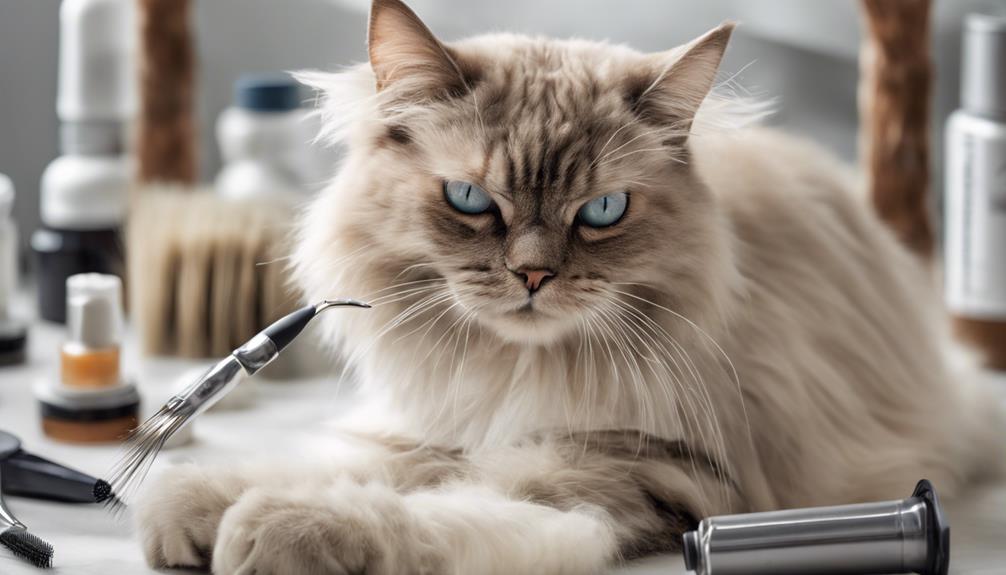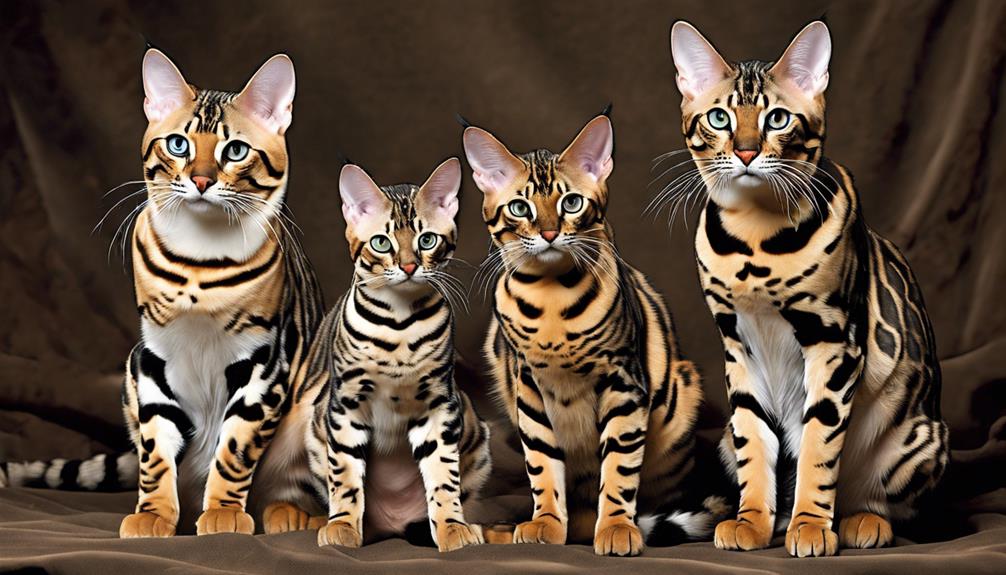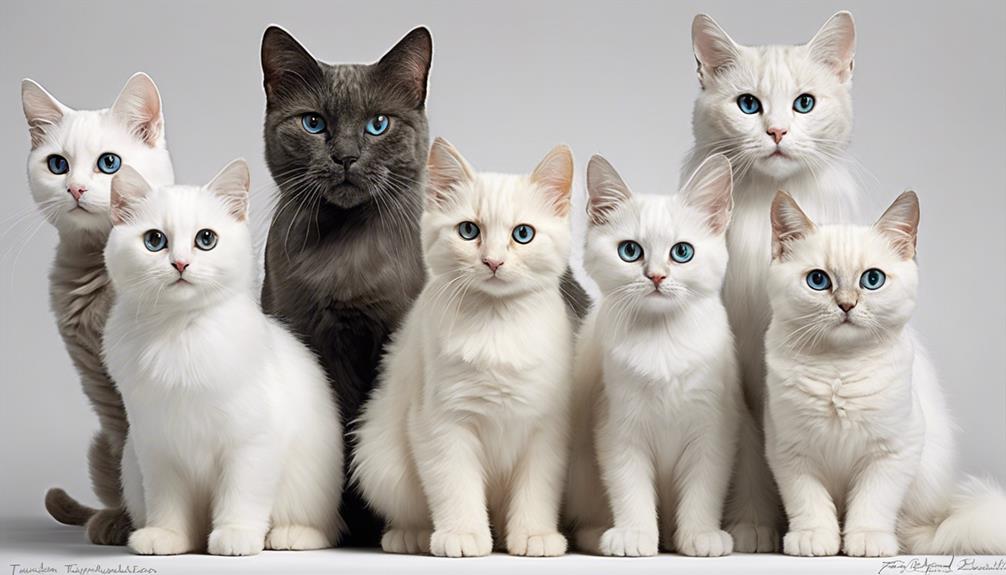Dealing with cat hairballs? Causes include loose fur ingestion, barbed tongues, and long-haired cats. Symptoms like hacking, retching, and lethargy signal hairball issues. Treat with gels, high-fiber supplements, and vet consultation. Watch for coughing, bloating, or unusual tiredness, needing immediate vet care. Home remedies like pumpkin puree and probiotics aid relief. Prevent with hydration, grooming, fiber-rich diets, and specialized food. Seek vet help for severe symptoms or changes in behavior. Try fish oil, cat grass, and coconut oil as natural remedies. Stay informed for better cat care. More insights await in our comprehensive guide.
Key Takeaways
- Use hairball-control gels and high-fiber supplements.
- Consider fiber-loaded treats and specialized cat food.
- Consult a vet for persistent hairballs or symptoms.
- Maintain a healthy digestive system with dietary changes.
- Incorporate natural remedies like pumpkin puree and probiotics.
Causes of Cat Hairballs
Hairballs in cats often result from ingesting loose fur during grooming. Cats have a barbed tongue that catches loose hair while grooming, leading to the ingestion of this hair.
Long-haired cats and breeds that shed excessively are more prone to hairballs as they tend to ingest more fur during grooming sessions. The hair forms a mass in the digestive tract, causing irritation and blockages. As cats can't digest hair, it accumulates in their stomach and intestines, forming the hairball.
Ensuring that your cat has enough fiber in their diet can help move the hair through their system more effectively. Additionally, providing specialized cat foods designed to reduce hairball formation can be beneficial.
Regular grooming not only keeps your cat's coat in good condition but also helps minimize the amount of loose hair they ingest, ultimately reducing the risk of hairball formation.
Symptoms to Watch For
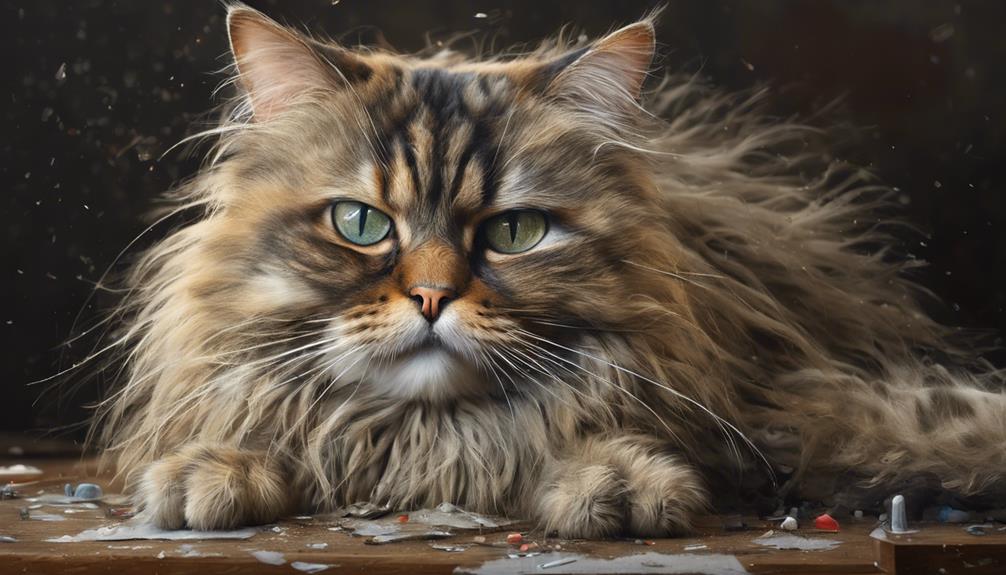
When it comes to our feline friends, keeping an eye out for common signs of hairballs is crucial. Watch for symptoms like hacking, gagging, and retching, as they could indicate your cat is struggling with hairball issues.
If your cat is showing persistent vomiting without expelling a hairball, it might be a red flag for a more serious underlying problem that requires prompt attention.
Common Signs of Hairballs
Experiencing frequent episodes of hacking and gagging could indicate that your cat is struggling with hairballs. These common signs of hairballs, such as retching and persistent vomiting without expelling a hairball, are important symptoms to watch for.
If your cat shows a lack of appetite, seems lethargic, or experiences digestive problems like constipation or diarrhea, hairballs could be the culprit. Keep an eye out for severe symptoms like a bloated abdomen or life-threatening blockages, as these indicate a serious hairball issue that needs immediate attention.
Understanding these hairball symptoms is crucial for effective hairball management and treatment. Remember, prevention and timely intervention play key roles in keeping your feline friend healthy and happy.
Behavioral Changes in Cats
Behavioral changes in cats, such as increased grooming or obsessive licking, may indicate potential hairball issues that require attention. Cats experiencing hairball problems may show signs of discomfort, like changes in appetite or refusal to eat. Additionally, avoidance of activities or hiding behavior could signal distress due to hairballs.
If your cat starts exhibiting excessive meowing, pacing, or seeking solitude, it might be struggling with hairball troubles. Keeping an eye out for these behavioral changes can help you identify and address hairball issues promptly, ensuring your feline friend stays happy and healthy. Remember, early detection and intervention are key in managing hairballs effectively. Be attentive to your cat's behaviors to provide the care they need.
Effective Treatment Options
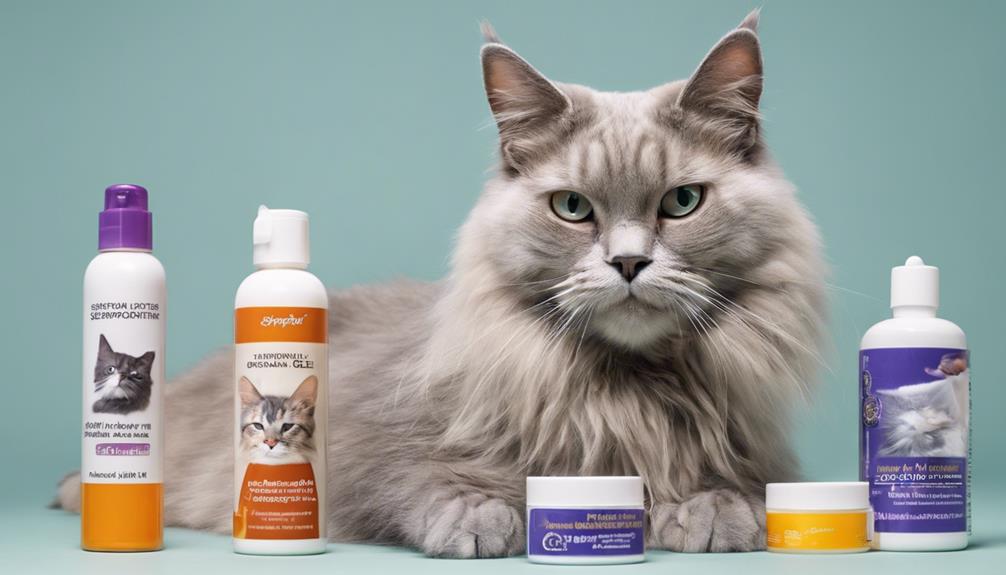
To effectively address hairball issues in cats, considering various treatment options is essential. Hairball-control gels, like Laxatone, act as lubricants to help cats pass hairballs more easily. High-fiber supplements can aid in sweeping hair through the digestive system, reducing hairball formation.
Cats may enjoy fiber-loaded treats, which not only manage hairballs but also serve as a tasty solution. Switching to high-fiber cat food is another effective way to control and prevent hairballs in cats. If your feline companion experiences frequent hairballs or related symptoms, consulting a vet is crucial for proper treatment.
These options provide practical ways to address hairball concerns and ensure your cat's well-being. By incorporating these treatments into your cat's routine, you can help them maintain a healthy digestive system and minimize the discomfort associated with hairballs.
Veterinary Intervention Indicators
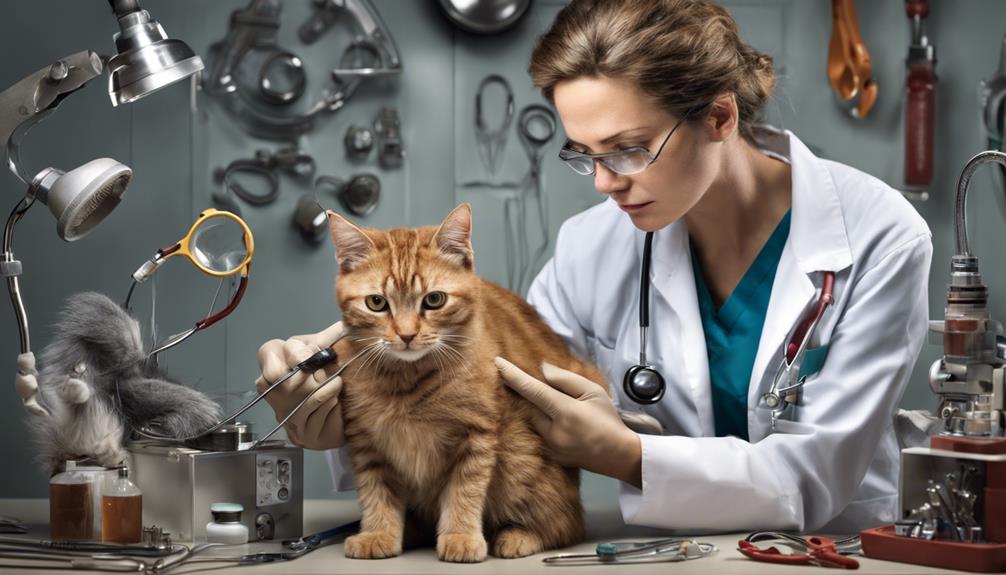
Upon observing persistent vomiting without hairball expulsion in cats, it becomes evident that veterinary intervention may be necessary to address potential underlying issues. Some indicators that your feline friend may need professional assessment include:
- Coughing: Persistent coughing alongside hairball issues could point to a more serious condition.
- Constipation or Diarrhea: These symptoms may signal an obstruction or gastrointestinal problem.
- Bloated Abdomen: A distended belly in conjunction with hairball troubles may require immediate attention.
- Lethargy: Unusual tiredness beyond normal hairball discomfort might indicate a more significant problem.
- Loss of Appetite or Difficulty Drinking: These signs could suggest an urgent need for veterinary care in hairball-related cases.
Home Remedies for Relief
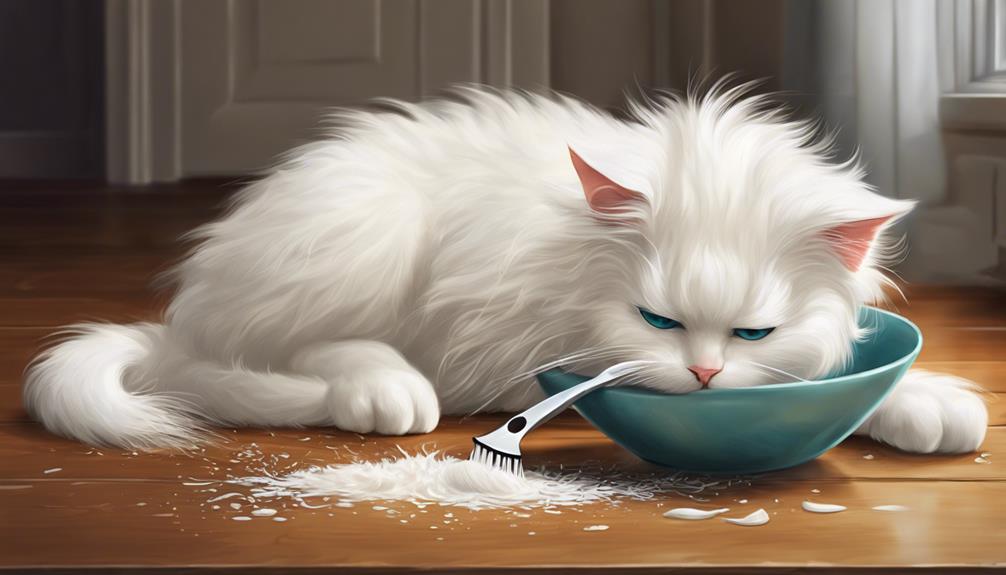
When looking for ways to help your cat with hairball troubles, consider natural remedies like:
- Pumpkin puree
- Cat grass
- Coconut oil
- Probiotics
These options can aid in digestion, induce vomiting to eliminate hairballs, act as a natural lubricant, and promote gut health to reduce hairball formation.
Additionally, incorporating hairball-control treats with natural ingredients into your cat's diet regularly can help manage and prevent hairballs effectively.
Natural Hairball Remedies
Exploring natural hairball remedies offers cat owners effective ways to alleviate their feline companions' discomfort and promote digestive health. Here are some simple remedies to help your cat with hairball issues:
- Pumpkin Puree: Aids digestion and helps hair pass through the digestive tract.
- Coconut Oil: Acts as a natural lubricant to ease the passage of hairballs.
- Plain Yogurt: Introduces beneficial bacteria to aid in digestion and reduce hairball formation.
- Olive Oil: Helps lubricate the digestive system, facilitating the elimination of hairballs.
- Grass or Catnip: Encourages natural vomiting to expel hairballs and promote digestive health.
These remedies can provide relief and support your cat's overall well-being.
Effective Dietary Changes
What dietary changes can help provide relief for cats suffering from hairball issues at home? Introducing high-fiber cat food aids in hairball digestion, while specialized diets recommended by veterinarians can target specific needs. Wet diets or canned food increase moisture content in the digestive system, promoting hairball passage. Hairball-control treats with added fiber offer digestive support for your feline companion. For tailored advice, consult with a vet for personalized dietary recommendations. To help you visualize the options available, we've compiled a table below:
| Dietary Changes | Benefits | Recommended Options |
|---|---|---|
| High-fiber cat food | Aids in hairball digestion | Quality brands |
| Specialized diets | Target specific needs | Vet-recommended options |
| Wet diets | Increases moisture content | Canned food varieties |
| Hairball-control treats | Offers digestive support | Fiber-enriched treats |
| Added fiber | Improves digestion | Supplements |
Preventing Future Hairball Issues

To prevent future hairball issues in your cat, regularly brushing their fur is essential to reduce loose hair and minimize hairball formation. Brushing not only helps in maintaining a healthy coat but also prevents excessive shedding, which can lead to hairballs.
Additionally, consider the following tips to further prevent hairball problems:
- Provide a high-fiber diet: A diet rich in fiber aids in moving hair through the digestive system, reducing the likelihood of hairballs.
- Use hairball-control products: Gels, treats, or supplements specifically designed to help with hairball prevention can be beneficial.
- Encourage hydration: Ensure your cat has access to fresh water at all times to support digestion and help prevent hairballs.
- Consult with a veterinarian: Seek personalized advice from a vet on the best hairball prevention strategies tailored to your cat's specific needs.
- Stay consistent with grooming: Regular cat grooming not only keeps their coat healthy but also reduces the amount of loose fur that can contribute to hairballs.
Frequently Asked Questions
What Is the Best Treatment for Hairballs in Cats?
For hairballs in cats, the best treatment involves specialized cat foods, hairball gels, regular grooming, and high-fiber supplements. These options help prevent hairball formation and aid in their passage through the digestive system.
How Do You Get a Cat to Pass a Hairball?
To help our cat pass a hairball, we encourage grooming, offer hairball control treats, increase fiber intake, keep them hydrated, and monitor behavior. If issues persist, we seek veterinary advice promptly for our furry friend's well-being.
What if My Cat's Hairball Won't Come Up?
When a cat's hairball won't come up, it's vital to act swiftly. Excessive efforts can lead to serious issues like choking. Urgent veterinary care is crucial, offering options like sedation or surgery for non-passable hairballs.
Does Vaseline Help Cats With Hairballs?
No, Vaseline doesn't help cats with hairballs. It can be harmful if ingested, leading to health issues. Safer options like hairball-control gels or high-fiber diets are recommended. Consult a vet for the best advice.
Conclusion
In conclusion, hairballs are a common issue for cats that can be easily managed with proper treatment and prevention.
Did you know that on average, a cat will produce one hairball every 1-2 weeks?
By recognizing the causes, symptoms, and treatment options, you can help your feline friend stay healthy and comfortable.
Remember to consult with your veterinarian for any concerns and try out some of the home remedies to provide relief for your cat.
